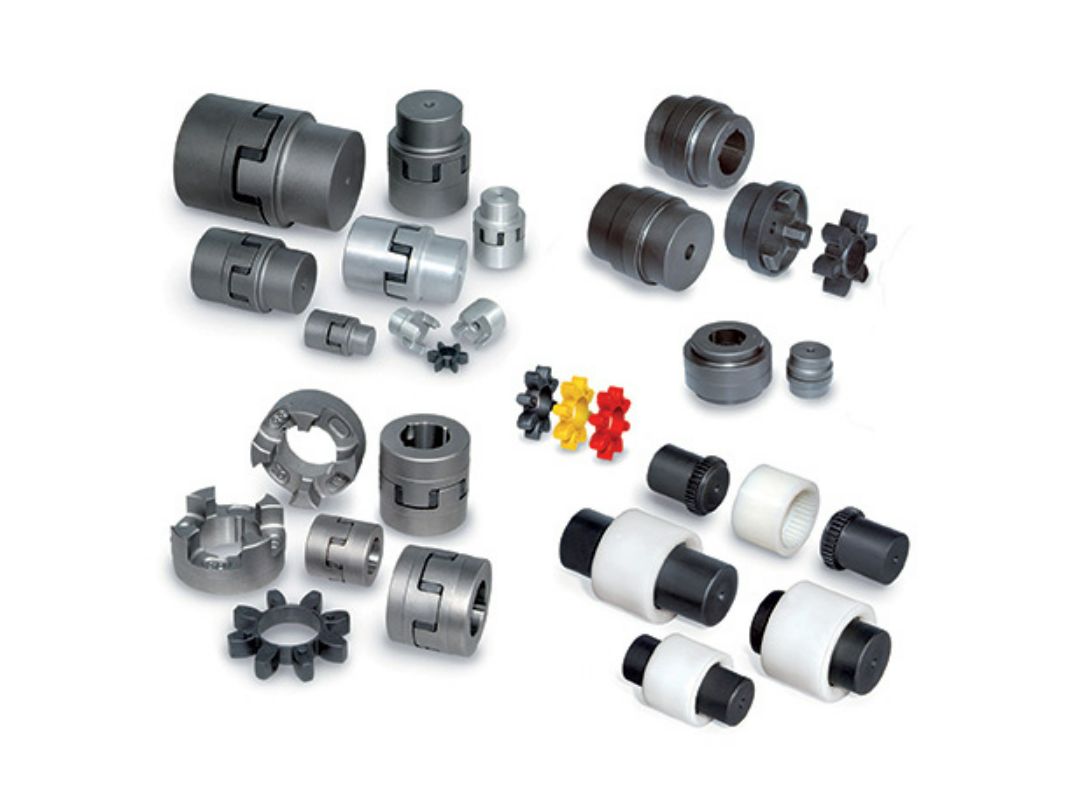COUPLINGS
They are divided into 4 families.
DK couplings
Threaded couplings are general-purpose commercial couplings with high quality standards as well as technical features and performances specific to industrial couplings.
From a structural point of view, flexible gear couplings are made of two symmetrical steel hubs and a synthetic resin sleeve that provides connection and power transfer between the two hubs.
The polymer's relative resistance to external moisture and its ability to withstand temperatures from -20°C to +120°C and short peaks up to +150°C make the coupling ideal to withstand severe operating conditions, even in adverse environments.
Gear couplings with Pa sleeves offer the following advantages:
- Compact design, reduced weight and moment of inertia
- Constant speed motion
- Quiet operation, elastic damping of shock and vibrations
- Resistance to most common chemicals and moderate heat, maximum 80°C
- Self-lubricating, non-conductive and maintenance-free
- Affordable price, easy to assemble, multitasking, even the heaviest ones.
UK couplings
The design of BK couplings is characterized by two cast iron hubs with short protrusions around their perimeter pointing towards the opposite hub. The two cores fit loosely together, and the spaces between them are filled with blocks of elastomeric material molded into an asterisk-shaped element called a "spider."
Couplings are elements that connect two rotating shafts and perform the following functions beyond transferring power from one shaft to another:
Provide a shock-free torque transmission by dampening any torsional vibration caused by the load or itself
Minimize torque shocks and peaks during startup
Compensate for slight angular and parallel shaft misalignments.
Tosyalı Makina selects only the best materials and makes the necessary arrangements for accurate processing and error-free quality control to guarantee all the above-mentioned performances at a superior level of quality, while ensuring a good service life.
In basic application, operating temperatures range from 40°C to +125°C, allowing short peaks up to 150°C.
For use in extreme operating conditions or above standards, special compounds have been studied that can handle any practical application.
The biggest advantage of flexible couplings lies in their "fail-safe" design; because the coupling does not necessarily have to be destroyed if the spider breaks off during operation. The system will continue to operate under safety conditions, preventing critical system outages, and the spider can be replaced later. Flexible couplings .are generally recommended and used for continuously operating electric motor machines, pumps, gearboxes, etc.
HRC couplings
HRC Couplings are couplings for general application with a flexible element that can compensate for higher misalignment:
Parallel misalignment up to 0.5 mm and Axial misalignment up to 1.7 mm.
Due to their superior design, HRC couplings can be fitted on larger shafts, making them a very interesting product.
Star couplings
Star coupling type is made of engineering plastics as elastic element. Suitable for connecting two coaxial transmission shafts. It has the functions of balancing the relative offset of two shafts, buffering, shock absorption and performance. It is suitable for a wide variety of situations and transmits torque. 20-35000.N.M, operating temperature -35~+80 degrees and can be replaced with German ROTEX couplings.
Polyurethane elastomer is bounded by convex claw blocks.
Salient features:
ECONOMY
The design of the coupling has been optimized so that the power capacities are balanced according to the appropriate shaft diameters using Taper-Lock® Bushing fixing.
DURABILITY
Transient peak loads are reduced by a flexible component whose deflection is a significant design
thought.
MISALIGNMENT
The incidental parallel, angular and axial displacement of the connected shafts can be adjusted.
SETUP
Quick and easy, no special tools required; Only one Allen key is required.
CARE
It is virtually eliminated and there is no need for lubricant.
ENVIRONMENT
The elastomeric component ensures that the coupling is suitable for use in most conditions, within the temperature range of -40°C to +100°C.

